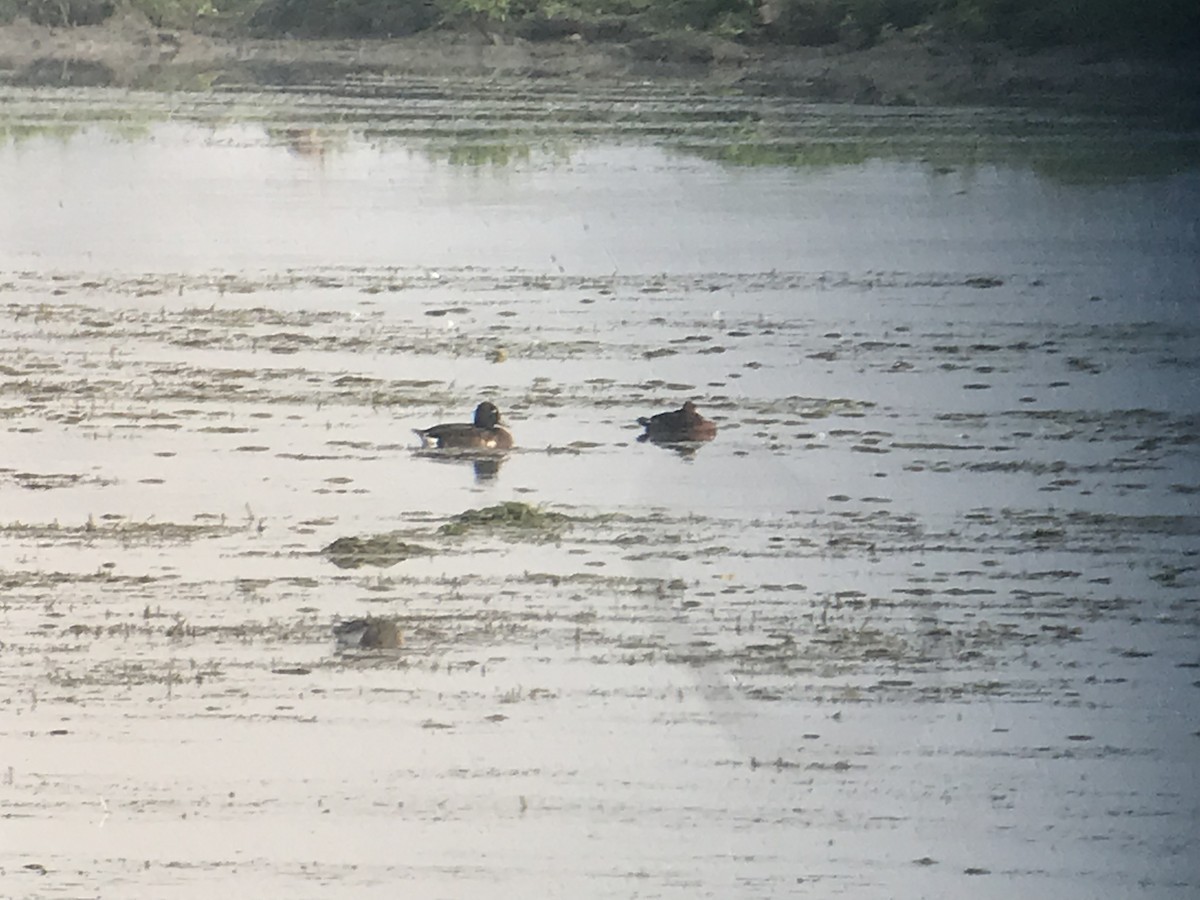Baer's Pochard
A species of Diving ducks Scientific name : Aythya baeri Genus : Diving ducks
Baer's Pochard, A species of Diving ducks
Botanical name: Aythya baeri
Genus: Diving ducks
Content
Description General Info
 Photo By Rofikul Islam
Photo By Rofikul Islam Description
Baer's pochard (Aythya baeri) is a diving duck found in eastern Asia. It breeds in southeast Russia and northeast China, migrating in winter to southern China, Vietnam, Japan, and India. The name commemorates the Estonian naturalist Karl Ernst von Baer. At 41–46 cm (16–18 in), it is similar in size and stance to its close relative, the ferruginous duck (A. nyroca), although the coloration of the drakes (males) is entirely different. Baer's pochard males are similar to those of the greater scaup (A. marila), but have a dark back and upper flanks; the white lower flanks and belly are conspicuous. The females of Baer's pochard and the ferruginous duck are quite similar, but that holds true for the females of almost all Aythya species. Eclipse males resemble females, but retain the white eye. Formerly classified as a vulnerable species by the IUCN, recent research shows that its numbers are decreasing more and more rapidly. It was consequently uplisted to endangered status in 2008. In 2012, it was further uplisted to critically endangered. Between 1987 and 2007, there were only eleven reports of groups of 100+ birds in mainland China. A recent census by World Wildlife Fund (WWF) China of Hubei province found just 131 individuals on Liangzihu Lake, and only another three flocks of ten, eight, and three individuals at other sites. Hunting and wetland destruction are thought to be the causes of the decline. 
Size
47 cm
Nest Placement
Ground
Feeding Habits
Baer's Pochard consumes a mixed diet of plant material, like rice, and animal prey including small frogs. Most foraging is done by diving, usually peaking before 10:00 hours. During winter, baer's Pochard spends 7.4% of time foraging, often in groups with other duck species.
Habitat
The preferred habitats for baer's Pochard encompass well-vegetated pools, small lakes, and slow-flowing rivers, typically surrounded by abundant emergent vegetation in open country. During the winter months, baer's Pochard often migrates to larger aquatic environments such as marshes, coastal lagoons, reservoirs, and estuaries.
Dite type
Piscivorous
General Info
Feeding Habits
Bird food type

 Photo By Rofikul Islam
Photo By Rofikul Islam